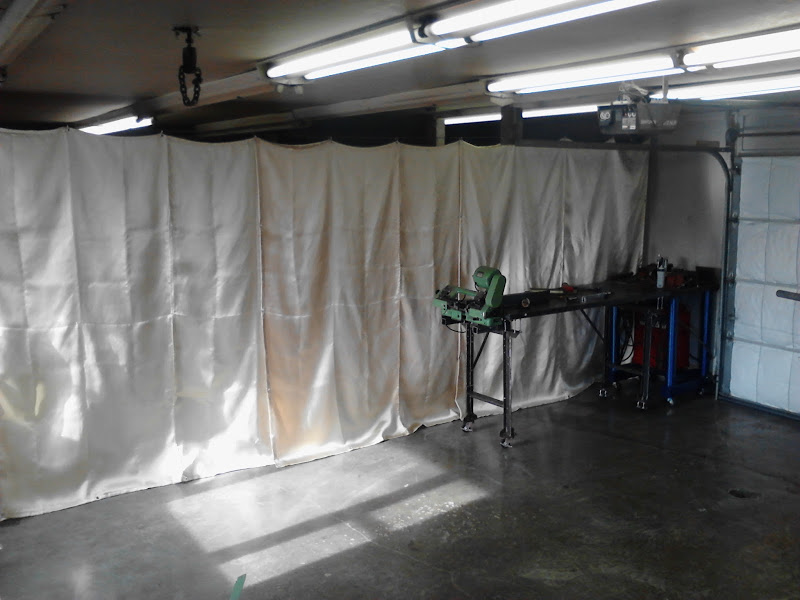Finding the right heating and cooling solutions for your garage office can be a game-changer. While traditional HVAC systems may struggle to regulate temperatures in these unique spaces, modern ductless mini-split systems offer an efficient and cost-effective alternative. Imagine enjoying consistent comfort in your workspace year-round without breaking the bank on utility bills. With customizable zoning options, you can create distinct climate areas within your garage office, catering to cool preferences or work requirements. These systems are easy to install and operate, making them a hassle-free choice for transforming your garage into a comfortable working environment.
Key Takeaways
- Assess the specific climate needs of your garage office to determine the most suitable heating and cooling solutions.
- Prioritize insulation to regulate temperature and reduce energy costs in your garage office.
- Consider various heating solutions such as radiant heating or portable heaters based on the size and layout of your garage office.
- Explore cooling strategies like fans, portable air conditioners, or mini-split systems to maintain a comfortable environment in your garage office.
- Implement ventilation solutions, such as exhaust fans or air purifiers, to ensure air circulation and quality in windowless garages.
- Opt for energy-efficient HVAC options to minimize energy consumption and operational costs while maintaining a comfortable workspace.
Assessing Garage Office Climate Needs
Several factors need consideration. First, assess the square footage of the garage office to determine the appropriate heating and cooling capacity. A larger home will require a more powerful HVAC system to ensure effective temperature regulation. Consider the ceiling height as taller spaces may necessitate different heating and cooling requirements compared to standard-height rooms.
Insulation is crucial in maintaining a comfortable cool climate within a garage office. Determine the insulation R-value of the building’s walls, ceiling, and floor to ensure energy efficiency. Moreover, inspect windows and doors for potential air leaks that could compromise temperature control. By addressing these areas, you can minimize heat loss during winter and retain cool air during summer months.
Consider available space for HVAC installation when assessing heating and cooling needs for a garage office. Depending on the layout of the workspace, you may need to explore compact or wall-mounted HVAC units that can efficiently provide climate control without occupying excessive room.
Energy efficiency should be at the forefront when selecting heating and cooling systems for a garage office. Opt for systems with high energy efficiency ratings such as Energy Star certified appliances which consume less power while delivering optimal performance.
Insulation Fundamentals
. Seal gaps around windows and doors to prevent heat loss, ensuring that the warm or cool air produced by your heating and cooling solutions stays inside the space where it’s needed. Consider using weather-stripping to seal air leaks in the garage office, as this can significantly reduce energy waste caused by drafts. Adding insulation to walls and ceilings is an effective way to minimize air infiltration and maintain a consistent indoor temperature.
Improved efficiency is essential for any heating and cooling system in a garage office setting. Optimizing HVAC system placement ensures efficient airflow throughout the space, making it easier to regulate temperatures effectively. Regularly cleaning and replacing air filters is another simple yet impactful way to improve efficiency. Clogged filters can obstruct airflow, leading to decreased performance of your heating or cooling system. Moreover, utilizing zoning systems provides greater control over temperature regulation in specific areas of the garage office.
Heating Solutions Explored
Portable Heaters
Portable electric heaters are a versatile option. These compact devices provide targeted heating, making them ideal for small spaces like garage offices. Safety is paramount when choosing a portable heater, so look for models with tip-over protection and overheat shut-off features. Consider the convenience of adjustable thermostat settings on these heaters, allowing you to maintain a comfortable temperature without wasting energy.
Radiant floor heating systems offer consistent warmth by distributing heat evenly across the floor surface. As an effective heating solution for garage offices, radiant floor systems ensure that the entire space receives adequate warmth without any cold spots. However, it’s essential to factor in the installation cost when considering this option. Evaluate whether your budget aligns with the expenses associated with installing radiant floor heating in your office space. Furthermore, assess if your existing flooring is compatible with this type of system before proceeding with installation.
Ductless Systems
Ductless mini-split systems present several benefits as heating solutions for garage offices. These units offer efficient zonal heating capabilities, allowing you to customize temperatures in different areas of your office based on individual preferences and usage patterns. Moreover, their ease of installation makes them an attractive choice for transforming garages into functional workspaces while ensuring optimal comfort levels during colder months.
Cooling Strategies for Garages
Proper Insulation
Proper insulation is essential to maintain a comfortable temperature in garage offices. It’s crucial to ensure that the walls, floors, and ceilings are well-insulated. This helps regulate the indoor temperature by preventing heat from entering during hot weather and escaping during colder months.
When insulating a garage office, it’s important to choose insulation materials suitable for the specific conditions of this space. For example, reflective insulation can be effective in reducing radiant heat transfer through the roof and walls. Considering professional installation can ensure optimal results and long-term energy efficiency.
AC System Selection
Selecting an appropriate air conditioning system is pivotal for maintaining a cool environment in garage offices. The choice of an AC system should be based on the size of the space to ensure efficient cooling without unnecessary energy consumption. Moreover, it’s beneficial to consider humidity control features within the selected AC unit as excessive humidity can lead to discomfort and potential damage to electronic equipment.
Another factor to evaluate when choosing an air conditioning unit is its noise levels. Since many garage offices also serve as workspaces or meeting areas, selecting a quiet AC system contributes significantly to a conducive working environment.
Cooling Tips
In addition to proper insulation and selecting suitable AC systems, there are various practical cooling tips that can enhance comfort in garage offices. Utilizing fans strategically within the space improves air circulation which aids in distributing cool air more effectively throughout the area.
Moreover, keeping blinds or curtains closed during peak sunlight hours prevents excessive heat buildup inside the office area. This simple practice minimizes solar heat gain through windows and reduces reliance on cooling systems during hot periods.
Regular maintenance scheduling is crucial for ensuring optimal performance of AC units installed in garage offices. Timely servicing helps identify any issues early on while also enhancing overall efficiency and longevity of cooling equipment.
Ventilation for Windowless Garages
Proper ventilation is crucial. Assess your specific needs based on the activities conducted in the garage office. For instance, if there are fumes from paints or chemicals, consider installing exhaust fans to remove stale air and odors.
Evaluate natural ventilation options such as operable windows. These can help regulate airflow and prevent the space from feeling stuffy or stagnant. By allowing fresh air to circulate, you can create a more comfortable working environment.
Energy-Efficient HVAC Options
Energy-efficient HVAC options play a crucial role in maintaining a comfortable working environment while minimizing energy costs. One of the most popular choices for such spaces is the mini-split system. Unlike traditional HVAC units, mini-split systems offer several advantages, making them an ideal solution for garage offices.
Mini-split systems boast multi-zone capabilities, allowing personalized comfort by independently controlling the temperature in different areas of the office. This means that if part of the garage is used as a workspace and another portion as storage, each area can have its own climate settings. These systems are often equipped with ductless or ducted options, providing flexibility in installation without compromising aesthetics. For instance, ducted mini-splits allow discreet placement by concealing the unit within the ceiling or walls, preserving valuable space within the office.
In evaluating heating and cooling solutions for garage offices, it’s essential to consider longevity factors associated with different HVAC systems. Understanding how long each option typically lasts and what maintenance practices contribute to their lifespan is critical for making an informed decision about which system will provide reliable performance over time. By adhering to manufacturer’s maintenance guidelines—such as regular filter replacements, coil cleaning, and professional inspections—homeowners can significantly extend their equipment’s life expectancy. Moreover, investing in high-quality HVAC equipment from reputable brands ensures long-term reliability and minimizes the need for premature replacements due to subpar quality.
Aesthetic and Value Impact
HVAC Design
When considering heating and cooling solutions for garage offices, it’s crucial to assess the HVAC layout options tailored to the space. This involves evaluating the size of the office, insulation, and potential heat sources such as electronic equipment. By doing so, you can ensure that the heating and cooling systems are appropriately sized for efficient operation.
It’s important to consider ductwork design considerations for optimal airflow within the garage office. Properly designed ductwork ensures that conditioned air reaches all corners of the space, maintaining a comfortable environment throughout. For example, strategically placing vents or considering zoning options can help regulate temperatures effectively.
Incorporating smart HVAC design elements is also essential when implementing heating and cooling solutions in a garage office. These elements could include programmable thermostats, energy-efficient ventilation systems, or even smart sensors that adjust settings based on occupancy. By integrating these features into your HVAC system, you can significantly improve energy efficiency while ensuring comfort.
Home Value
Assessing how heating and cooling improvements can impact property value is crucial when choosing heating and cooling solutions for garage offices. Energy-efficient systems not only contribute to lower utility costs but also add considerable value to a home or an office space within a residential property. For instance, installing high-efficiency heat pumps or split-system air conditioners can enhance overall home value due to their long-term cost savings potential.
Investing in energy-efficient systems not only benefits homeowners by reducing operating costs but also serves as an attractive selling point when putting the property on the market in the future. Prospective buyers are increasingly interested in properties with upgraded HVAC features that offer improved comfort at reduced operational expenses.
Highlighting these upgraded HVAC features as selling points further emphasizes their impact on home value. When marketing a property with a well-designed heating and cooling system tailored specifically for a garage office setup, emphasizing its energy efficiency ratings or any additional smart features can greatly influence potential buyers’ decisions.
The Ideal HVAC System
Dependability
Dependability is crucial. It’s essential to assess the reliability of different HVAC systems before making a choice. Look into warranty coverage and service support offered by various heating and cooling solutions. This will provide you with an understanding of how well the system is backed in case of malfunctions or breakdowns. Evaluating user reviews on dependability can also offer valuable insights into the performance of different HVAC systems.
Consider opting for a thermostat that offers precise temperature control, ensuring consistent comfort within the garage office space. For example, a smart thermostat allows you to remotely monitor and adjust the temperature, providing convenience and energy efficiency.
Aesthetics
Incorporating heating and cooling solutions that complement the interior design of your garage office is essential for creating an inviting workspace. Sleek, modern HVAC designs can enhance aesthetics while ensuring optimal climate control. When selecting a system, consider its visual impact on the overall ambiance of the space.
Evaluating noise levels of heating and cooling systems is vital for maintaining a peaceful environment within your garage office. Opting for quiet operation ensures minimal disruption during work hours, promoting productivity without unnecessary distractions.
Challenges in Garage Climate Control
Insulation Hurdles
Insulating a garage office space presents unique challenges due to its construction and layout. Garage offices often have different types of insulation barriers, such as wiring, pipes, and other obstructions that make it difficult to create a consistent thermal barrier. For instance, the presence of exposed beams or open rafters can complicate the installation of traditional insulation materials.
To address these challenges, consider using spray foam insulation tailored to the specific needs of garage structures. Unlike traditional fiberglass batts or rolls, spray foam can easily conform to irregular surfaces and fill gaps around obstacles like wiring and plumbing. It provides an effective air barrier while offering high R-values for better thermal performance.
When evaluating insulation solutions for garage offices, it’s essential to assess not only the walls but also the ceiling and floor areas. A comprehensive approach ensures that all potential sources of heat transfer are effectively mitigated. Installing insulated garage doors can significantly contribute to maintaining a comfortable indoor environment by minimizing heat loss during colder months.
Ventilation Issues
Ventilating a garage office requires careful consideration of indoor air quality concerns while addressing specific challenges associated with this type of space. Since garages are not originally designed for occupancy, ensuring proper ventilation is crucial for maintaining healthy indoor air quality.
One solution is to install mechanical ventilation systems specifically designed for garage environments. These systems help remove pollutants from indoor air while introducing fresh outdoor air in a controlled manner. Furthermore, considering occupancy levels and activities within the space is vital when determining the appropriate ventilation requirements.
In addition to mechanical ventilation systems, incorporating natural ventilation elements such as operable windows or vents can enhance airflow within the garage office. This allows for passive cooling during mild weather conditions while promoting adequate circulation throughout the space.
Closing Thoughts
You’ve now explored various heating and cooling solutions for your garage office, gaining insights into assessing climate needs, insulation fundamentals, and HVAC options. It’s clear that achieving the ideal temperature in your workspace involves a combination of strategies, from effective insulation to energy-efficient HVAC systems. Consider the aesthetic and value impact as well, as a well-regulated environment can enhance both comfort and property value. As you navigate the challenges of garage climate control, remember that finding the right solution may require a blend of creativity and practicality.
Now armed with knowledge about heating and cooling solutions, take the next step in transforming your garage office into a comfortable, productive space. Whether it’s improving insulation or investing in an energy-efficient HVAC system, implementing these strategies can make a significant difference. Keep exploring and experimenting to find the perfect balance for your unique workspace. Your ideal garage office climate is within reach!
Frequently Asked Questions
FAQ
What are the key factors to consider when assessing climate needs for a garage office?
When assessing climate needs for a garage office, consider insulation, heating, cooling, and ventilation requirements. The size of the space and local climate conditions will also impact your choices.
How can I improve the energy efficiency of my HVAC system in a garage office?
To enhance energy efficiency in your garage office HVAC system, opt for programmable thermostats, regular maintenance, proper insulation, and sealing any air leaks. Choosing an appropriately sized unit is crucial.
What are some effective heating solutions for a garage office?
Consider options like electric heaters or radiant floor heating to effectively warm up your garage office. Evaluate each option based on energy efficiency and suitability for your specific space.
Are there specific challenges that come with controlling the climate in a garage workspace?
Yes, challenges such as poor insulation, limited ventilation options (especially in windowless garages), and fluctuating outdoor temperatures can make it difficult to maintain comfortable indoor conditions.
How can I ensure proper ventilation in my windowless garage office?
For windowless garages lacking natural airflow, mechanical ventilation systems like exhaust fans or air purifiers can help maintain air quality. Properly sizing and positioning these systems is essential for effective ventilation.






